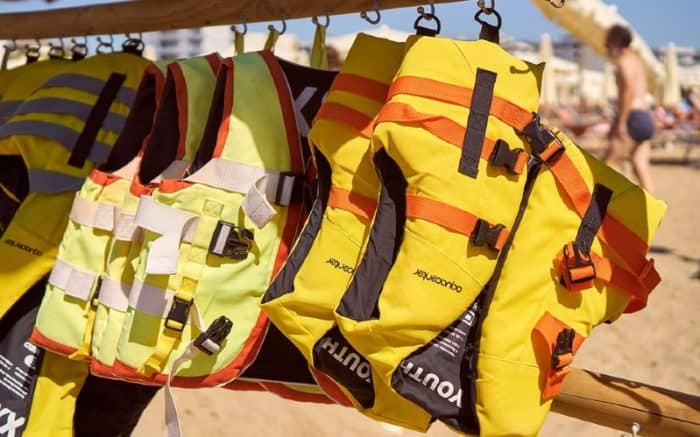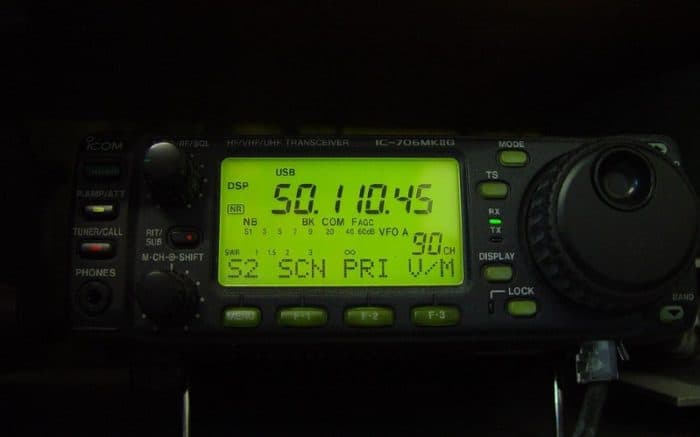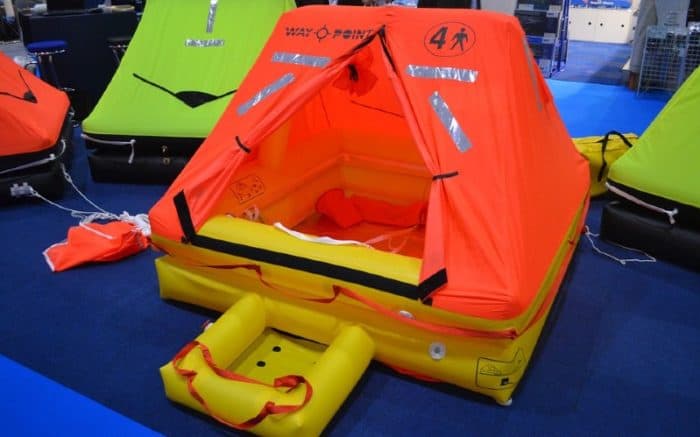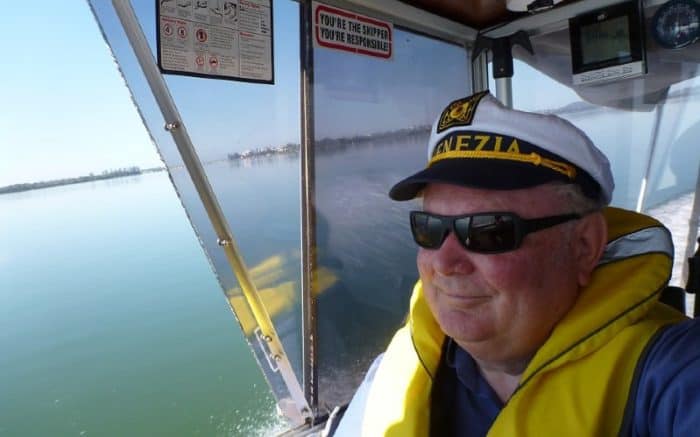Procedure for Abandoning Ship
The decision to abandon ship can have grave consequences and should never be taken lightly. For that reason, it’s important to keep a clear head and remain calm. The very first step you need to take when you are debating when and how to abandon ship is to consider if it’s truly necessary.
This may sound strange, but it is critical. More than one boater has abandoned ship only to make the situation worse. This is because there are times when a boat is simply disabled. Or it begins to sink but only partially submerges. In those cases, it is likely safer to remain on the boat. Your survival ability on a life raft can decrease significantly. You have fewer resources and are harder to spot on a life raft. A disabled vessel may be able to handle rough seas and weather better than a life raft as well.
For this reason, abandoning ship should only be done when you are certain your vessel is going to sink. If you are confident that you and your crew are in danger if you remain, it’s time to leave.
First Steps When Abandoning Ship
This is when keeping a clear head is so important. Your pulse will be racing. If you have passengers on board they may be panicking. Stay calm and organized. You will need to move quickly but safely.
These are the initial steps you want to take before you even look at your life raft.
- Put on all available waterproof clothing, including gloves, headgear, and life jacket. Make sure every person on board has a proper life jacket and they are wearing it.
- Collect your survival kit. If possible get extra blankets or clothing. It’s good to have these in a dry bag for emergencies.. Your survival kit should contain some flares, food and water, a handheld VHF radio and something like an EPIRB. This will help rescuers find you as soon as possible. It’s also good to have a search and rescue transponder (SART) as well.
- Note your present position. This will help rescuers narrow down where to search. Your EPIRB and GPS are important, but be thorough. Confirm your location as you are preparing to abandon ship.
- Send out MAYDAY message.
How to Send a MAYDAY
A MAYDAY is sent in emergencies only. There are other distress calls, like a Pan Pan, which request assistance but are less immediate. MAYDAY means you are in immediate, life-threatening danger.
REMEMBER: These are taken very seriously by the Coast Guard. A false MAYDAY is a criminal offense. You can get fined for making one as a joke or when they don’t apply.
If you are abandoning ship, the Coast Guard and rescue teams need to know. Here’s an example of a MAYDAY you can send.
- Make sure your VHF radio is on channel 16. This is the channel reserved for emergency communications
- You should have a DSC enabled radio. Press the DISTRESS button. The radio should beep. This will transmit all of your boat’s informationt o the Coast Guard.
- Press the transmit button and repeated MAYDAY MAYDAY MAYDAY
- State the name of your vessel and your boat ID number
- State your position
- Now you can detail the nature of the emergency. Let the coast Guard and rescuers know what has happened. Also explain how many people are on board. Finally, explain the assistance you require. For example, you might say “Our engine caught fire. There are four of us on board. We are abandoning ship and need immediate rescue.”
- Alert rescuers if there are any injuries that have occurred. This can affect the nature of how they rescue you, so it’s important. If someone has had a heart attack, for instance. Rescuers need to know.
- Include any additional, relevant info that may help rescue. This could include the type of boat you have. You may also mention the size or color. Anything that can help rescuers find you faster.
- Provide the rescuers with a timeline if at all possible. If your boat is sinking, let them know approximately how much time you think you have. If the boat will be submerged before help can arrive, they need to know. Otherwise they’ll be looking for something that’s not there.
- Wait for a response for as long as you safely can. This is a crucial step. If no one heard your MAYDAY then it won’t do you much good. Of course, you may only have a short amount of time. But repeat your message for as long as you safely can. If your emergency and position are not confirmed by the Coast Guard, rescuers will likely not be coming.
- Once you have a response, make sure they can repeat your location back to you. Confirm that it is correct. Then you can proceed with your emergency abandoning of the ship
- If you are unable to get a reply, you may need to abandon ship anyway and try your best with a handheld radio in the life raft. Always prioritize your life and the lives of your passengers.
Abandoning Ship
Now that you have alerted rescuers, you will need to evacuate the vessel. Again, there are several steps to take to ensure your safety.
- Launch life raft attached to ship. Make sure it’s secured to your vessel on launch. Attach the painter to something like a cleat. The painter is the rope attached to your life raft. If possible, launch your life raft downwind.
- The painter could be upwards of 50 feet long. For most rafts, you’ll need to pull this line taut. When it’s ready, one final tug will release the CO2 canister and inflate the raft. You should be familiar with your particular raft and its operation ahead of time.
- Launch dinghy attached to life raft.
- Activate your EPIRB (emergency position indicator radio beacon).
- Try to enter the life raft directly from the boat (if impossible, use minimal swimming effort to get on board). You don’t want to get in the water if you can avoid it.
- Make sure all passengers and crew are accounted for.
- Cut your life raft free from the vessel. Do this as close to the vessel as possible. This ensures you have as much rope as possible. Get a safe distance from the sinking vessel.
- Collect all available flotsam. The most unlikely articles can be adapted for use under survival conditions.
- Keep warm by huddling bodies together. Keep dry, especially your feet. If your model of raft has any ability to keep you sheltered and dry, deploy it as soon as possible.
- Your raft should have bailing scoops and sponges included. Use them to keep the raft dry now if necessary.
- Stream a sea anchor. SOLAS approved rafts do this automatically.
- Use your handheld VHF radio to make emergency calls. If you have not confirmed location with the Coast Guard, you should continue to do so now.
- The EPIRB can be secured with its line to the raft so that it can float in the water.
- Distribute sea sickness pills. Treat any injuries with your first aid kit.
- Arrange lookout watches. With an active EPIRB broadcasting your signal, help should be on the way. Keep watch for the Coast Guard or any other vessels. You may need to flag down a passing ship.
- Use flares only on skipper’s orders when there is a real chance of them being seen. These are best reserved for when you have visual contact with other vessels.
- Alert Coast Guard of any injuries if applicable. Keep them apprised of your situation so they can best prepare. Early communication is important.
- Try to avoid eating or drinking for the first 24 hours if possible. You will need to ration your food if rescue does not come right away, so be prepared.
- Arrange for collecting rainwater. Ration water to maximum one-half quart per person per day, issued in small increments. Do not drink seawater or urine. If water is in short supply, eat only sweets from survival rations.
Act Like a Captain
As we have said, keeping calm is key. If you have family and friends on board, they will likely be scared. The captain needs to keep everyone calm and organized. It’s okay if you’re scared as well. But you need to project confidence. If not for yourself, for everyone else. It’s a tall order, but this is an emergency, right? You’re being forced to step up for the safety of everyone.
If the captain projects a calm and confident attitude, the crew will be reassured and since an anxious crew means poor judgment and performance, a captain should do all he or she can to keep the crew calm. The idea here is not to lie to your crew, and certainly not to fake a fearless, macho manner, going down with the ship is a pretty dumb plan. The idea is that, by maintaining a calm, deliberate attitude in the face of a dire situation, you can help your crew remain effective and perhaps help save lives. If you need to fake that attitude to some degree, so be it.
Emergency Communications
When trouble strikes, there are many ways to communicate your distress and seek help. Use your VHF or single-sideband radio and follow the procedures for distress.
There are three levels of priority communications: distress, urgent, and safety, identified by MAYDAY, PAN-PAN, and SECURITE. Understand the differences by reviewing the tip on radio procedures . Panicked radio communications can confuse a rescue effort. Learn the proper procedures. Try to stay calm. Use the acceptable distress signals as outlined in the Navigation Rules. Flares are fast and effective — red for distress.
The Bottom Line
Abandoning a ship is going to be a stressful and frightening situation. Rescue could be an hour away or days away. No matter what happens, keeping your head is important. Being prepared is key for a quick and efficient rescue. You must have a VHF radio and an EPIRB. Consider including a SAT phone as well. Have an abandon ship bag at the ready. Communication is the most important tool for survival in this situation. VHF radios don’t always have the range necessary to keep you seen and heard. Maybe sure you have at least one backup, and ideally more.
Be familiar with your emergency devices. The EPIRB, the SART, the life raft and flares. Know how to use them and make sure your crew does as well. Keep others calm as you keep yourself calm. Trust in your training and knowledge to help you through.
Categories: nauticalknowhow















